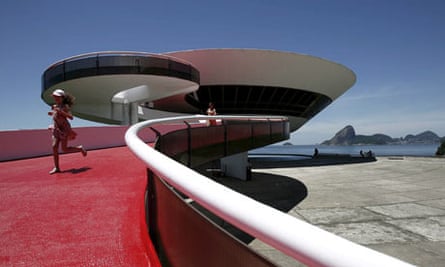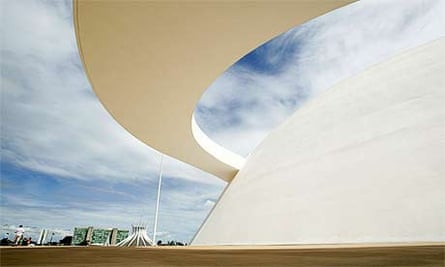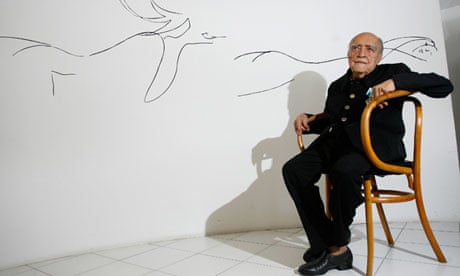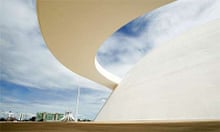"My work is not about 'form follows function'," wrote Oscar Niemeyer, "but 'form follows beauty' or, even better, 'form follows feminine'."
The architect's love of the female form was a well-known inspiration for the undulating concrete curves of his projects, which channelled his native Brazil's sun, sea, skies and passion for life into built reality.
"I am not attracted to straight angles or to the straight line, hard and inflexible, created by man," he said famously. "I am attracted to free-flowing sensual curves. The curves that I find in the mountains of my country, in the sinuousness of its rivers, in the waves of the ocean, and on the body of the beloved woman."

Crude line drawings of such beloved women – variously cavorting, supine, or half-merging into a building – adorn the pages of his memoirs, The Curves of Time, which provide a fascinating insight into the man behind the monuments.
In between recollections of his many encounters with Le Corbusier and the political struggles involved in realising Brasilia, much time is devoted to the driving force behind his work: the women, parties and practical jokes that were all part of his enthusiasm for life.
He recollects an episode in Brasilia, throwing a party to welcome foreign architects on the jury for a public competition, organised to select a design for the city's masterplan. "None of your snooty cocktail parties," his jujitsu wrestler friend, Mário Catrambi, had said. "When a man wants a party, he needs a woman. Let's call up a few girls."
"What fun everybody had!" Niemeyer recalls. "Nobody goes out to the garden without their clothes on," his friend had ordered. "So the party was confined to the living room and the bedrooms. It was the cordial, all-too-human kind of event that only the surrealists of Paris could have conceived."
He describes another similar gathering for a different project, in which the girls had "baroque buttocks" and a "homespun air". Until his last days, Niemeyer could be found sketching the baroque forms of the local population on Copacabana Beach.
His memoirs also contain stories of endless practical jokes and high jinks, which sounded like a regular feature of his office life.
"One day, a guy we didn't know too well came into the office," he remembers, "and there he was, really and truly getting on our nerves with his incredible nonchalance. Fernando decided to cut out four cardboard phalluses, and slowly and carefully he stuck them on the heels of the visitor's shoes. This strange character finished his business with us and we laughed as he proceeded along Avenida Rio Branco, unable to figure out why everyone was staring at him and laughing at the unusual spurs he was wearing."
Such capers were not confined to Brazil – Niemeyer continued them while working in Paris in the 60s.

"On one occasion I was driving into the city with Duprat, who was in the passenger seat completely wrapped up in his own thoughts. So I drove into a familiar gas station and positioned the car on the hydraulic platform. I then got out, leaving Duprat in the car, still daydreaming, and waved the attendant to raise up the lift. Suddenly finding himself all alone in mid-air, Duprat let loose every kind of curse he could think of. I burst into laughter and went for a coffee."
It is this mischievous sense of fun and delight that will live on in the buildings of Oscar Niemeyer. He brought a much-needed injection of passion and emotion to the monotonous world of modernism, an outlook that lifted the spirits and continues to have a lasting legacy.
As Le Corbusier once told him, in reluctant praise: "Oscar, what you are doing is baroque. But it's very well done."








Comments (…)
Sign in or create your Guardian account to join the discussion